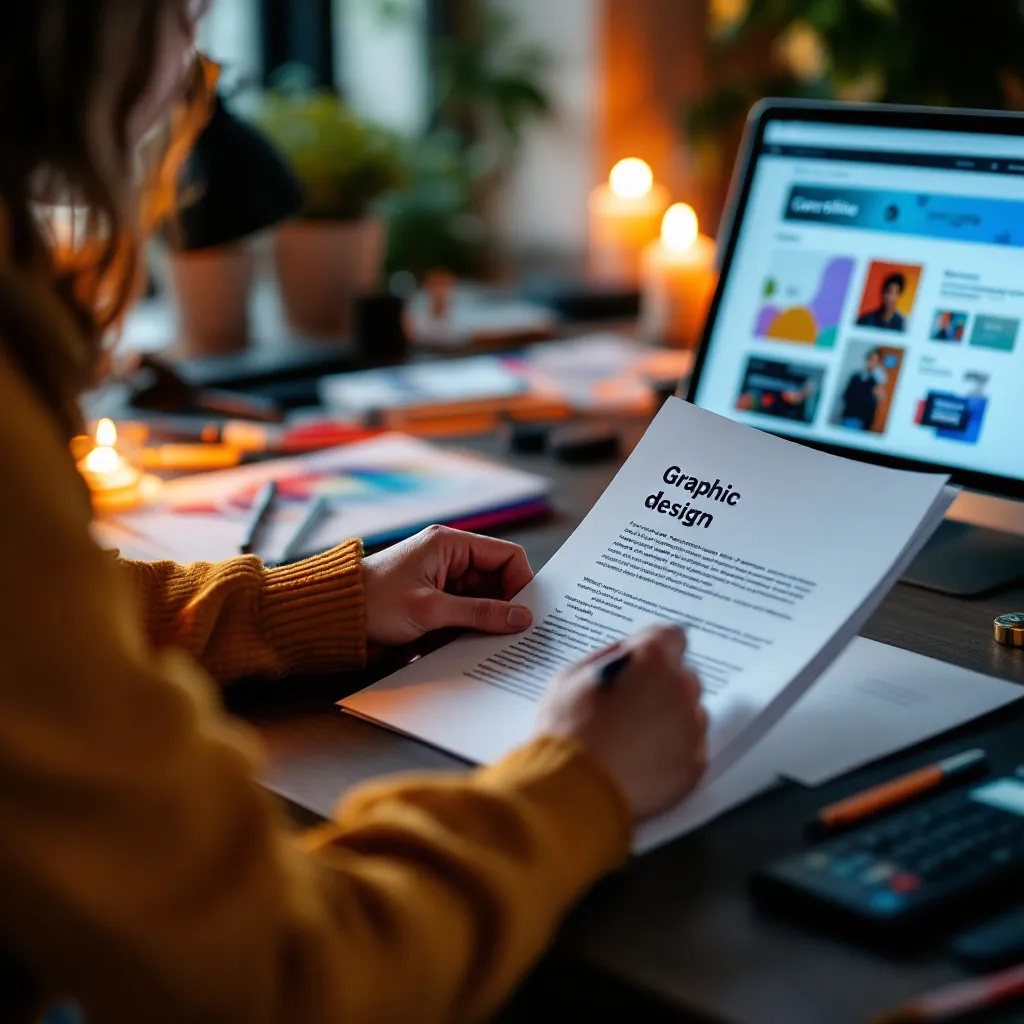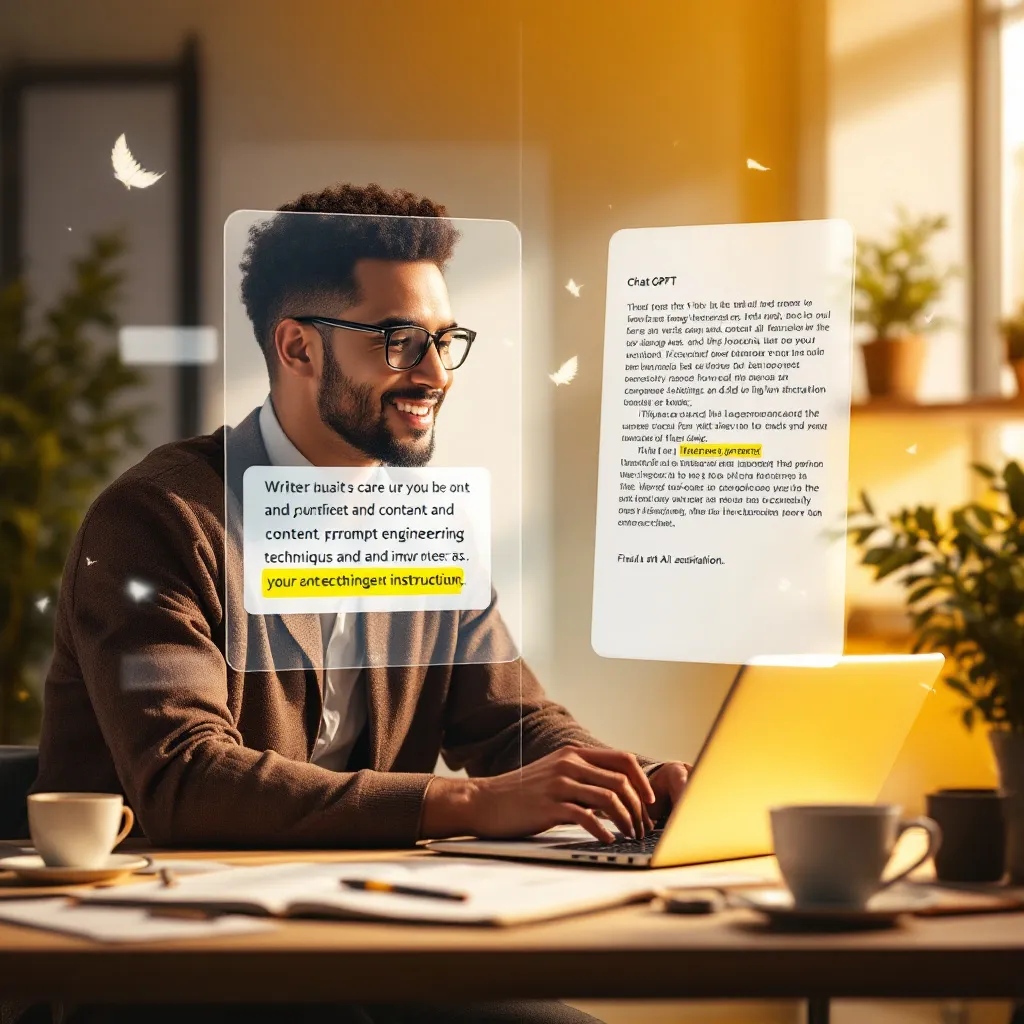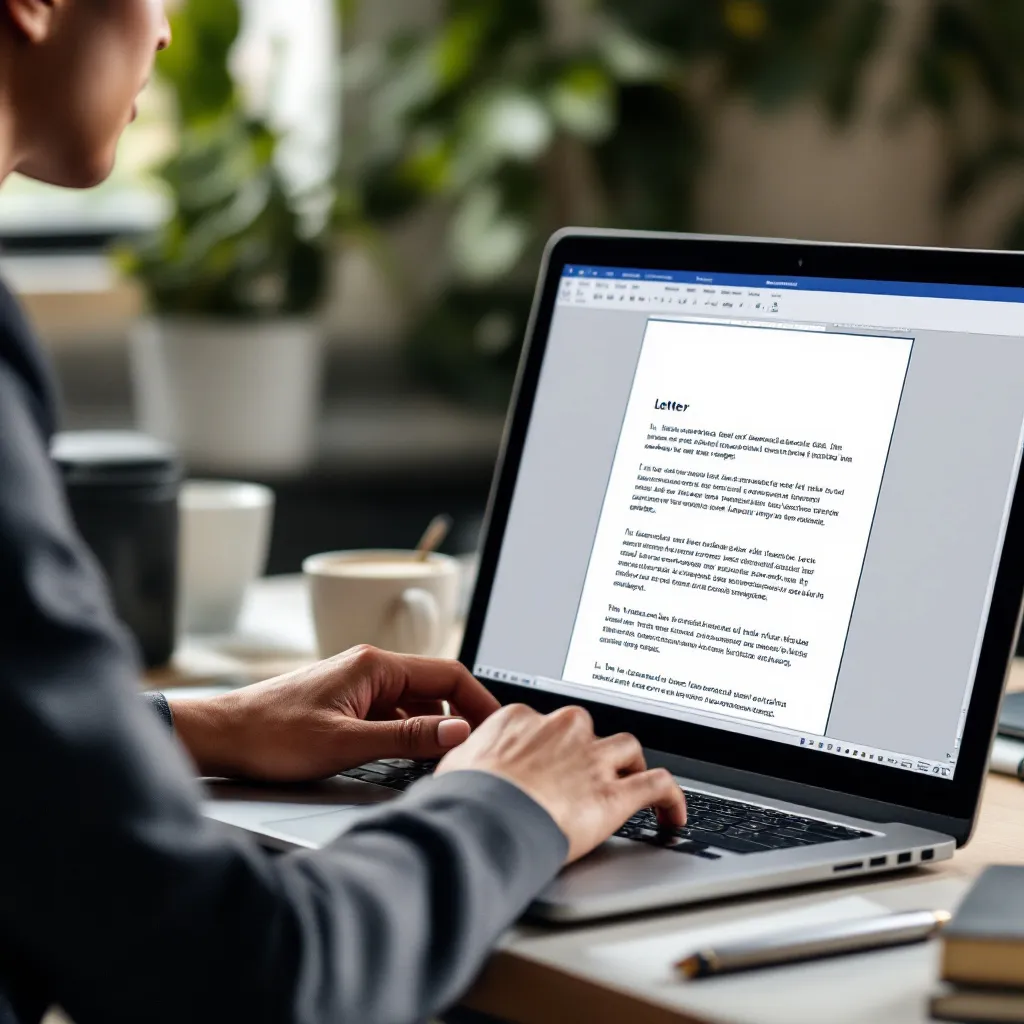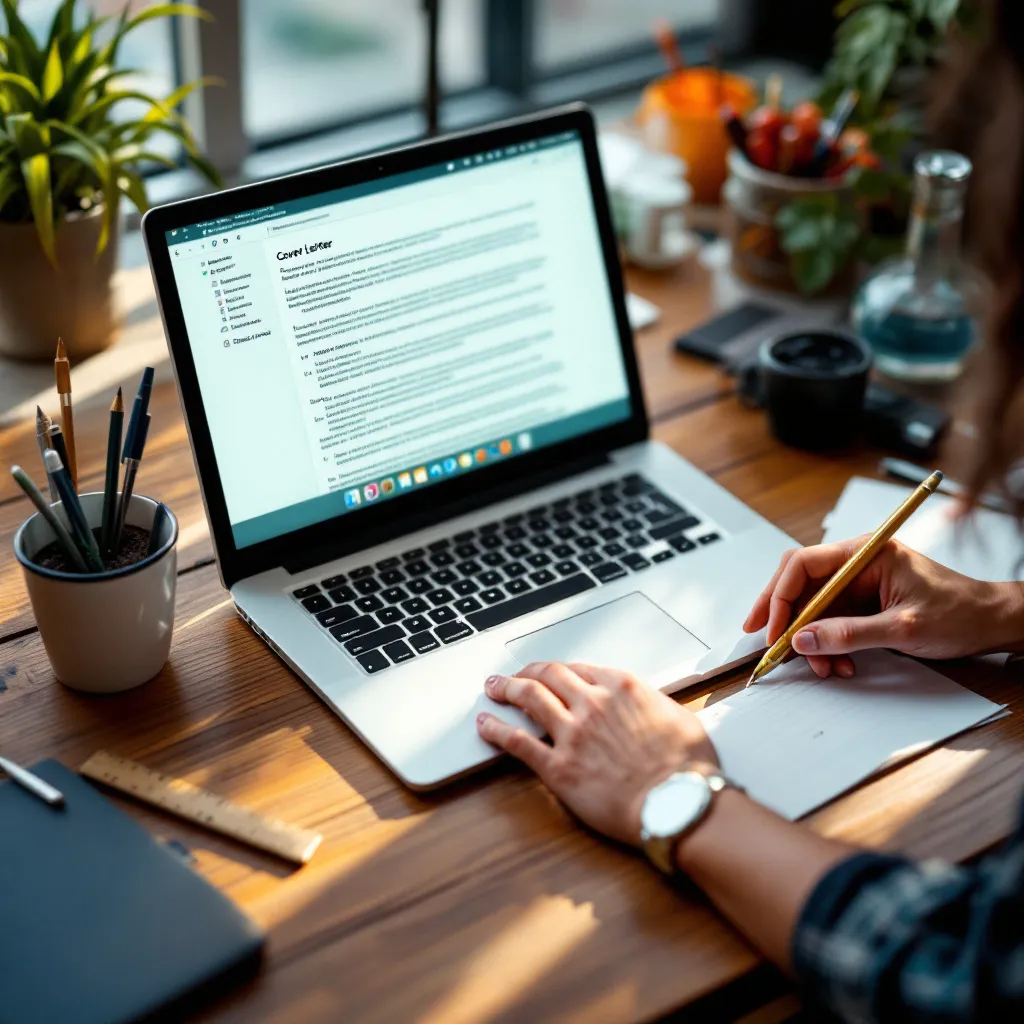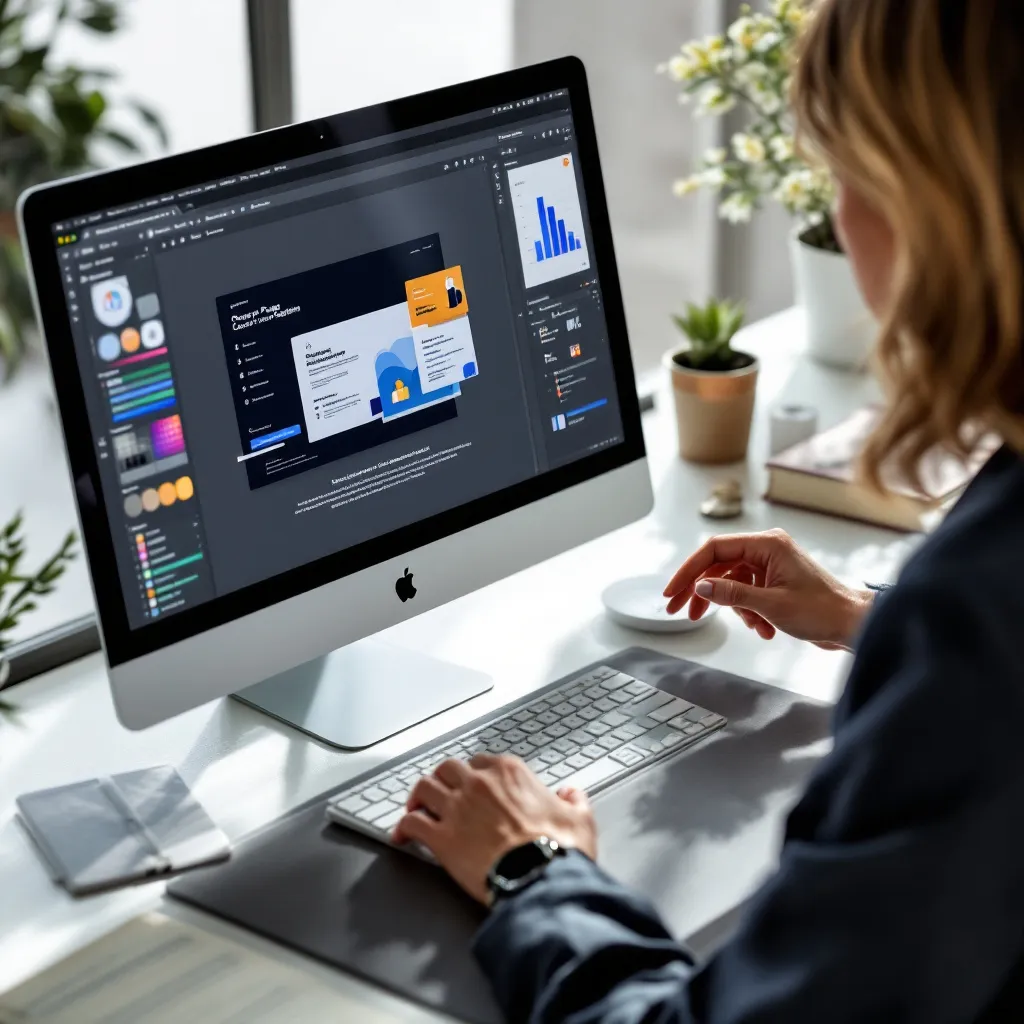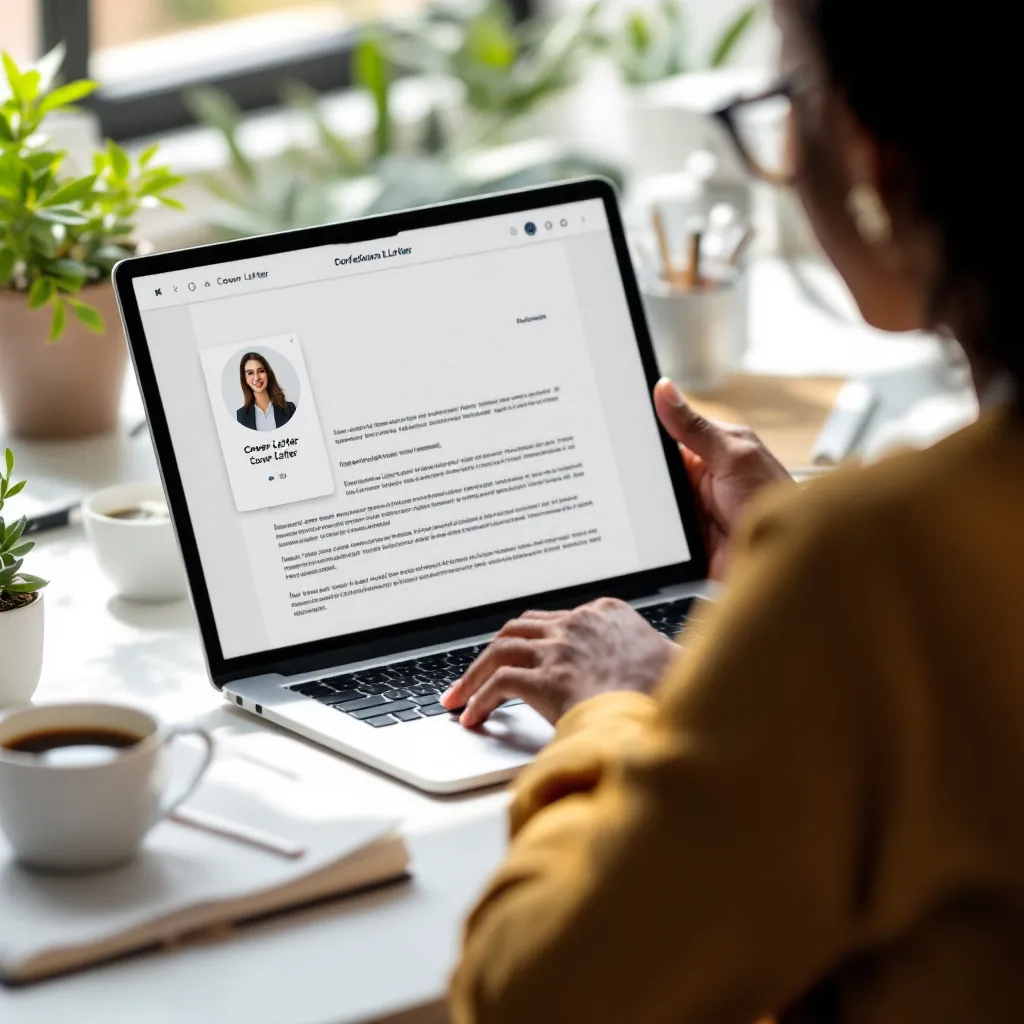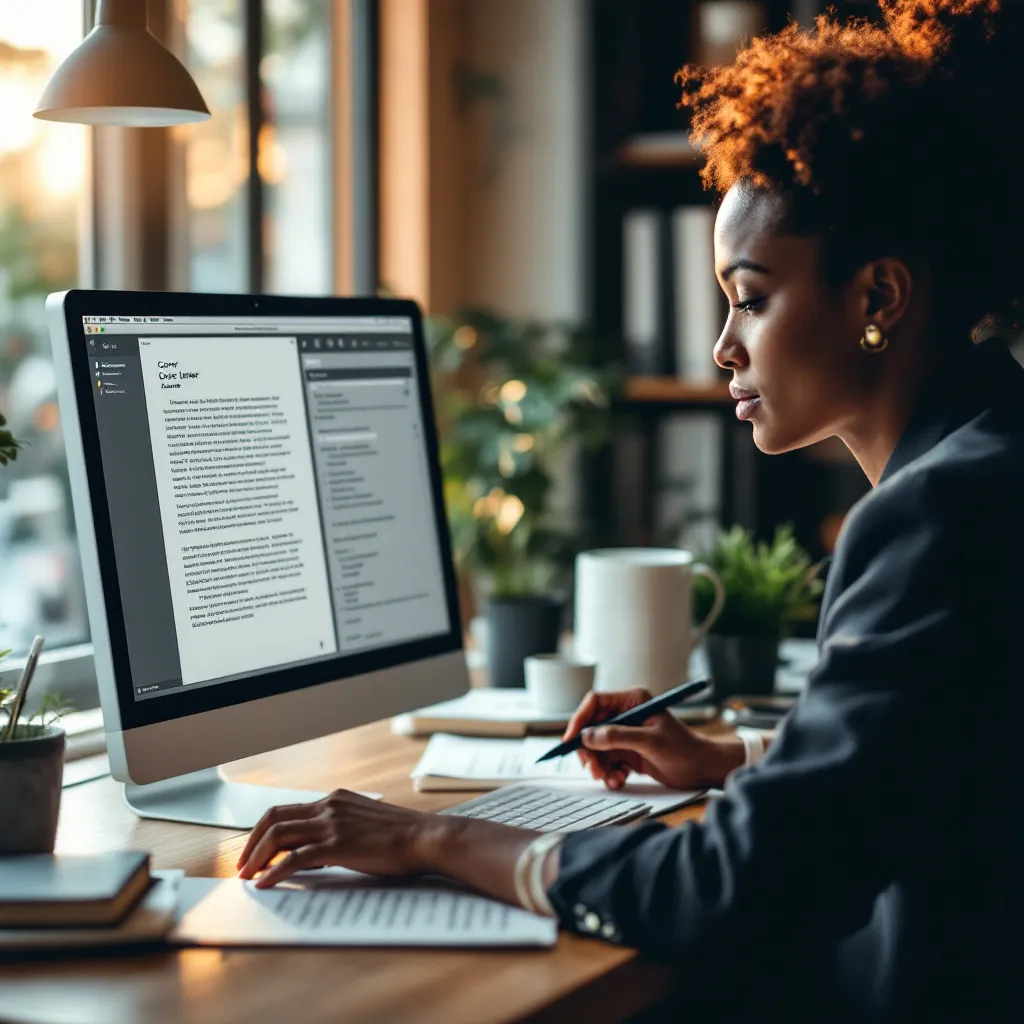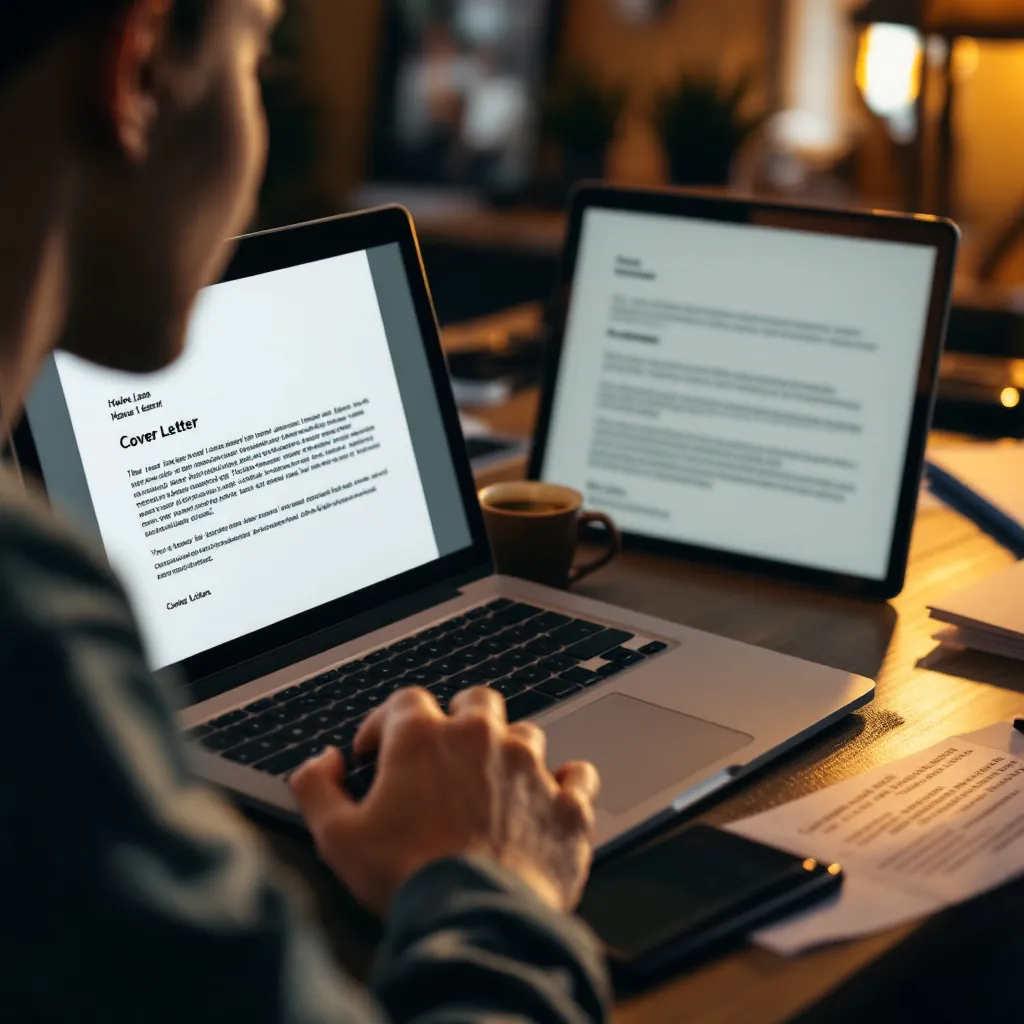In the competitive world of graphic design, your cover letter serves as both a professional introduction and a preview of your design sensibilities. A well-crafted cover letter complements your portfolio, demonstrating not just your creative abilities but also your communication skills and understanding of business objectives. Let’s explore how to create application materials that will help you stand out in the crowded design job market.
Key Elements of an Effective Graphic Design Cover Letter
The most impactful graphic design cover letters blend creativity with professionalism while addressing the specific needs of the position. According to Dribbble’s comprehensive guide, your cover letter should begin with brand-aligned headers that include your contact details, portfolio links, and relevant social profiles.
Essential Components to Include
-
Personalized introduction: Address hiring managers by name whenever possible. Indeed’s research shows this simple step increases engagement by 26%, immediately setting your application apart from generic submissions. A strong opening that references the company’s design aesthetic or recent projects shows you’ve done your homework.
-
Skills showcase with measurable outcomes: Rather than simply listing technical abilities, pair them with quantifiable results. For example: “Leveraged Adobe Creative Suite to redesign brand collateral, resulting in a 40% increase in client retention.” This approach, recommended by Swooped’s guide to graphic designer cover letters, demonstrates both your technical prowess and business impact.
-
Portfolio integration: An overwhelming 87% of hiring managers review portfolios linked in applications according to Grammarly’s cover letter template guide. Include direct links to relevant projects that showcase work similar to what the position requires.
Common Mistakes to Avoid
- Using generic templates that fail to showcase your unique design perspective
- Focusing solely on technical skills without demonstrating their business value
- Neglecting to research the company’s design aesthetic and project needs
- Formatting inconsistencies that contradict your claims of design expertise
Crafting Application Materials for Different Design Specialties
Different design roles require emphasizing specific skills and experiences in your application materials. Here’s how to tailor your approach:
UX/UI Designer Applications
For UX/UI positions, highlight your user research processes and proficiency with prototyping tools like Sketch or InVision. Reference specific projects where your designs improved conversion rates or user engagement metrics. According to SketchUp’s article on design narratives, incorporating user journey insights demonstrates your strategic approach to design problems.
Example: “Redesigned the mobile checkout flow based on user testing insights, reducing cart abandonment by 30% and increasing mobile conversions by 25%.”
Branding Designer Applications
When applying for branding positions, showcase your ability to develop comprehensive style guides and maintain visual consistency across platforms. Metropolis’ storytelling framework suggests emphasizing how your branding work solved specific business challenges.
Example: “Created a unified visual identity system for a product line spanning 12+ items, resulting in 45% improved brand recognition in consumer testing.”
Freelance Graphic Designer Applications
Freelance applications should emphasize your reliability, self-management capabilities, and client relationship skills alongside your design abilities. Highlight your adaptability across multiple design contexts and industries, as well as your project management strengths.
Writing Compelling Design Narratives in Your Application
The most memorable cover letters tell compelling stories about your design process and solutions. The UX Collective’s storytelling tips recommend using user-centric narratives that demonstrate your problem-solving approach.
Case Study Approach
Structure mini case studies within your cover letter using a problem-solution-impact framework:
- Problem: Identify the design challenge you faced
- Solution: Briefly explain your approach and execution
- Impact: Quantify the results with metrics when possible
Example: “When tasked with redesigning the company’s e-commerce site, I identified navigation issues causing high bounce rates. By implementing a card-sorting exercise and heat mapping analysis, I created a more intuitive information architecture that reduced bounce rates by 35% and increased average session duration by 2.5 minutes.”
Visual Language and Formatting
Your cover letter’s design should reflect your professional brand while maintaining readability. Create visual consistency between your portfolio, cover letter, and resume to present a cohesive personal brand. Balance creativity with ATS compatibility by using PDF formats that preserve your formatting while still being scannable by automated systems.
Customizable Templates and Examples
While templates provide helpful structure, personalization is key to standing out. Here are three template approaches you can adapt:
-
Minimalist template: Clean layout with subtle accent colors matching your personal brand, as recommended by Dribbble’s template guide
-
Creative template: Infographic-style headers showcasing your design style while maintaining professional readability, as seen in Grammarly’s example templates
-
ATS-optimized template: Keyword-rich paragraphs that mirror job descriptions while maintaining natural language flow, following Indeed’s sample approach
When adapting templates, ensure your opening paragraph immediately communicates your unique value proposition and design perspective. Middle paragraphs should demonstrate relevant experience with specific examples, while your closing should include a clear call-to-action.
Digital Submission Best Practices
Technical Considerations
When submitting your application materials digitally, follow these best practices:
- File formats: Use PDF to preserve formatting—98% of employers prefer this format according to Grammarly’s guidelines
- Portfolio links: Place Behance/Dribbble URLs prominently in headers and email signatures as recommended by Dribbble’s submission guide
- ATS optimization: Include 5-7 job-specific keywords like “responsive web design” or “brand strategy” to improve visibility in applicant tracking systems
Digital Etiquette and Follow-up
After submitting your application:
- Wait 5-7 business days before following up
- Keep follow-up emails brief and reference specific points from your application
- Continue to engage with the company on professional platforms to demonstrate genuine interest
Streamlining Your Application Process
Creating tailored cover letters for each position can be time-consuming. ResuFit offers specialized tools that help graphic designers craft customized application materials efficiently. Their AI cover letter generator can analyze job descriptions and your portfolio to create targeted cover letters that highlight your most relevant skills and experiences.
For designers seeking inspiration, reviewing a portfolio cover letter can provide insights into how to effectively showcase your visual work. If you’re applying to multiple positions, using ai job application tools can help maintain quality while scaling your job search.
When you’re ready to submit applications, crafting a professional ai email for job application can further enhance your chances of making a positive first impression.
Conclusion
A standout graphic design cover letter combines visual sensibility, compelling storytelling, and strategic business thinking. By tailoring your application materials to specific design roles, incorporating measurable results, and maintaining professional formatting, you’ll significantly increase your chances of landing interviews.
Remember that your cover letter is itself a design project—one where you are both the designer and the product. Apply the same thoughtful approach you would use for client work, and you’ll create application materials that truly represent your talents and potential value to employers.
Whether you’re creating a simple cover letter sample or experimenting with a more distinctive funny cover letter approach for a creative agency, the fundamentals of good design and clear communication remain essential. With these strategies and tools at your disposal, you’re well-equipped to craft application materials that will open doors to exciting design opportunities.

